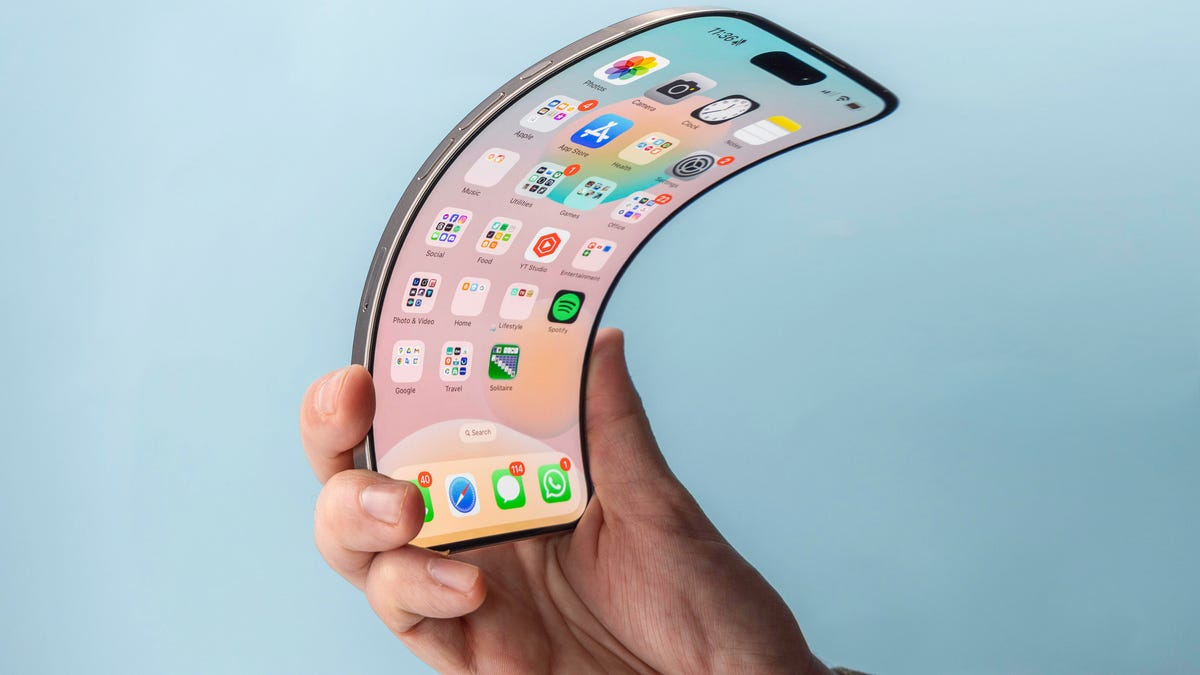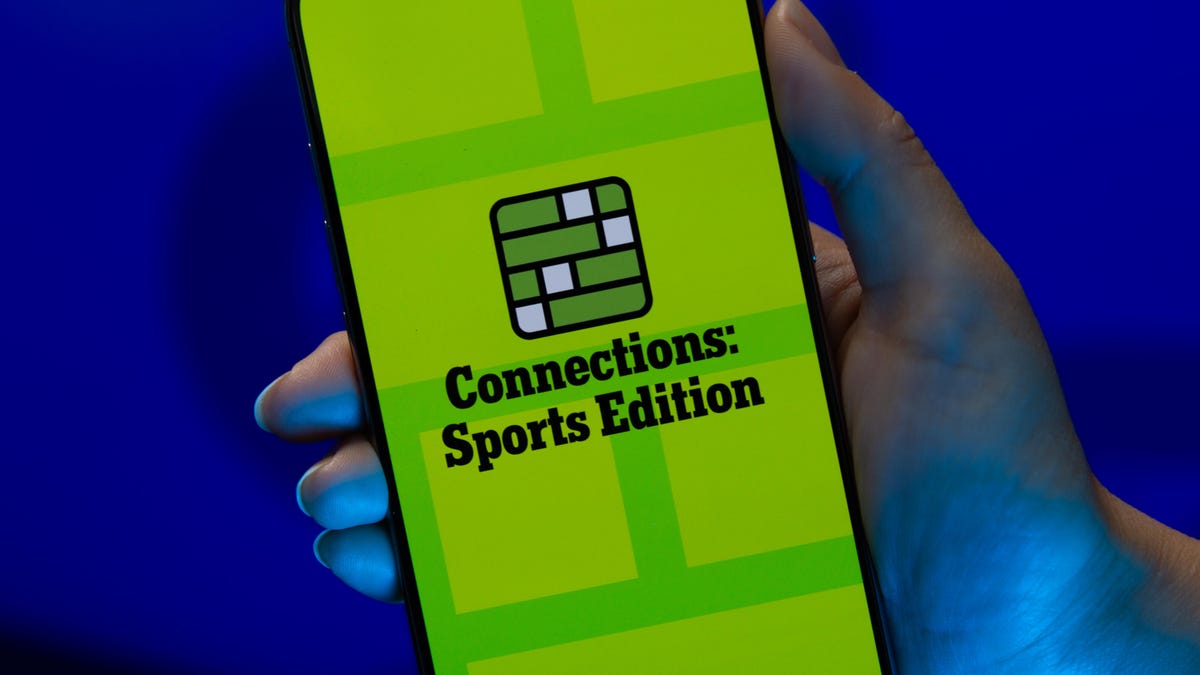Technologies
Best Samsung Galaxy A53 5G Case for 2023
Keep your phone protected at all times with the best Samsung Galaxy A53 5G cases on the market.

Having a protective case is almost always better than forgoing one, no matter what brand and model phone you own. Though the Galaxy A53 5G may not have as many cases as you might find for Samsung’s flagship Galaxy S22 lineup, there’s still a variety of Samsung A53 case options to choose from that are well worth your investment. The best Samsung Galaxy A53 5G cases offer a balance between form and function, we’ve found.
When picking out a phone case, it’s important to think about your priorities. Are you prone to dropping your phone often and need a sturdy case, or do you just want a slim sleeve to keep dust and debris away from your device? Do you want a case that adds something extra to your phone, like a credit card slot or kickstand? You should consider these questions — along with how much you’re willing to spend — when shopping for a new phone case.
I evaluated the cases below based on a variety of factors, including how much bulk they add to your phone, how easy they are to put on and remove, their build quality and how they hold up during drops. I dropped each case from a height of roughly three feet to test its durability. That might not sound very high, but it seemed like a good way to simulate the real-world experience of knocking your phone off a countertop or table, or dropping it as you take it out of your pocket. Spoiler: Every case in this list passed the test and protected the Galaxy A53 from damage.
Speck’s ImpactHero case for the Galaxy A53 5G is a slim shell with a soft touch back that’s stylish and easy to grip. The company claims the case was built with two layers of protective cushioning that enable it to withstand 8-foot drops. It’s fairly easy to install and remove, although it does take a bit more fiddling than the cases from Spigen and Samsung mentioned in this list.
Speck sells a standalone version of the case for $30 through its website, but you can also get it bundled with a screen protector for $45. Overall, the Speck ImpactHero is ideal for someone who wants a slim case that still feels protective and durable.
Spigen’s cases shine for their sleek designs that barely add any extra bulk or heft to your phone. The company sells nine different cases for the Galaxy A53 5G, and I tested the $45 Core Armor, $25 Liquid Air and $35 Crystal Slot.
The Core Armor claims to have a military-grade shock absorbent layer, while Spigen says the Liquid Air has a premium shell designed for shock resistance. The Crystal Slot’s main draw is its rear pocket, which is designed to store a single credit card.
All three of these cases feel thin, light and durable. They’re also not as stiff as other cases featured on this list, which makes attaching and removing them on the Galaxy A53 5G very simple. Spigen’s cases are the right choice for those who prioritize thin and light designs above all else, but still want enough protection to guard against the occasional slip.
Samsung’s selection of cases for the Galaxy A53 5G is small but diverse. There’s a silicone sleeve, a simple clear case, a wallet case, a durable case with a kickstand and a silicone cover with a strap attached to the back. I’ve been trying the wallet case and silicone strap case, and so far they’ve offered a solid combination of ease of use, protection and additional functionality.
The wallet case is simple and perhaps a bit plain compared to the pricier leather designs from companies like Nomad and Bellroy, neither of which make cases for the Galaxy A53 5G so far. But Samsung’s case is sleek, functional and relatively affordable at $40. And as its name implies, the S-View Wallet Cover has a tiny window near the top of its front flap that lets you see the time without opening it.
The $40 Silicone Cover With Strap earns its name from the colorful, bold seat belt-like strap positioned on the back of the case. It feels like Samsung’s version of PopSockets; it’s there to keep your phone securely in place but also serves as a statement piece.
But be warned: The strap cover’s metal buckle sounds jarring when hitting the ground, making drops and tumbles feel more dramatic than they actually are. Both cases are also partially made from recycled materials and snap onto the A53 5G fairly easily.
Otterbox is known for its durable cases, and it has plenty of options available for the Galaxy A53 5G. You’ll find cases that add varying degrees of protection (and thickness) to your phone. I’ve been testing three: the $30 Commuter Series Lite, $50 Symmetry Series Clear and $65 Defender Series Pro.
The Commuter Series Lite and Symmetry Series are both on the slimmer side for Otterbox. But the Commuter comes in a two-tone pink or black design, while the Symmetry has a clear build. The Symmetry has a slightly higher drop rating, since Otterbox claims it can withstand three times as many drops as military standard, while the Commuter is said to endure twice as many drops.
Those looking for something more rugged should check out the Defender Series Pro, which the company claims can survive four times as many drops as military standard and comes in three pieces: a polycarbonate shell, a synthetic slipcover and polycarbonate holster. But be warned: This case will add significant heft to your phone.
The Defender Series Pro and Symmetry Series Clear are both made of 50% recycled plastic. Otterboxes are sturdier but also stiffer than the other cases on this list, which means they can require a little elbow grease to install and remove.
Technologies
Apple Desperately Needs to Launch a Foldable iPhone Flip Next Year
Commentary: Apple is the only major phone company without a folding phone. That needs to change in 2026.

Apple’s iPhone 17 came and went and while we certainly love the iPhone 17 Pro and its vibrant cosmic orange color, I can’t help but be disappointed that the long-rumored foldable iPhone Flip wasn’t part of the company’s September launch event. Most Android phone-makers, including Samsung, Google, Motorola, OnePlus, Xiaomi and Honor are multiple generations into their own folding phone lineups, and it’s beginning to feel like Apple is late to the party. That might be a problem.
Apple dominates in the premium phone category, but foldables — which fit into the premium space in terms of price — are already nipping at its heels, with Motorola telling CNET that 20% of customers buying its Razr foldable jumped ship from Apple. Meanwhile, Samsung is in the seventh generation of its Flip and Fold series. As Lisa Eadicicco discovered during a visit to Seoul, «foldables are everywhere» in Samsung’s home country of South Korea.
With nearly every major Android phone-maker entering the foldable market, Apple risks losing potential customers. It also runs the risk of letting a rival like Samsung become the go-to name for foldables, which could make it harder for Apple to make an impact if it eventually launches its own device. Furthermore, early adopters drawn to foldable tech may be too entrenched in the Android ecosystem by the time Apple’s phone arrives to want to switch to iOS.
Apple is unlikely to be worried. It’s estimated that around 20 million foldables from all manufacturers were sold worldwide in 2023, while Apple reportedly sold 26.5 million iPhone 14 Pro Max handsets in the first half of that year alone. In 2024, foldable sales were flat — and 2025 isn’t fairing much better, according to analysts at CounterPoint Research, although Samsung did report record numbers of preorders for its latest foldable. Clearly, Apple feels it has yet to miss the boat.
Apple has always found success in biding its time, observing the industry and launching its own take on a product when it’s ready. Apple didn’t invent phones, tablets, smartwatches or computers, but it found ways to take existing products and make them more useful, more valuable in day-to-day life and — dare I say — more exciting. It’s why the iPhone, iPad, Apple Watch and Mac lines dominate the market today.
For me, I need to see Apple’s take on the foldable phone. I’ve written before about how disappointed I am in foldables. I’ve been a mobile reporter for over 14 years and phones have become increasingly dull as they’ve converged to become slight variations on the same rectangular slab.
Read more: Best Flip Phone for 2025
Foldables promised something new, something innovative, something that briefly sparked some excitement in me, but several years in, that excitement has dwindled to the point of being extinguished. They are fine products and while I like the novelty of a screen that bends, they’re not a revolution in how we interact with our phones. Not in the way that the arrival of the touchscreen was when we were still pushing buttons to type out texts.
I did hope that Google’s Pixel Fold would be the phone to catapult the foldable forward, and while the recent Pixel 10 Pro Fold — the second generation of Google’s foldable — does offer some great updates, it still doesn’t offer any kind of revolution. Instead, it feels more like a «me too» move from Google. Ditto for the OnePlus Open. So I’m left instead to look toward Apple, a company with a track record for product revolutions, to create a new take on the genre that genuinely drives forward how we use our phones.
That innovation won’t just come from the product design. Apple works closely with its third-party software developers, and it’s that input that would help a folding iPhone become genuinely useful. My biggest complaint around foldables right now is that while the hardware is decent, the devices are essentially just running standard versions of Android with a handful of UI tweaks thrown in. They’re regular phones that just happen to bend.
Few Android developers are embracing the folding format, and it’s not difficult to see why; the users aren’t there in sufficient numbers yet to justify the time and expense to adapt their software across a variety of screen sizes. The multiple folding formats already available mean Android foldables face the same fragmentation issue that has plagued the platform since the beginning. Android-based foldables are simply a more difficult platform for developers to build for than regular phones. Apple would be able to change that, as it proved with the iPhone and iPad.
Given Apple’s close relationships with top-tier developers — not to mention its own vast developer team — I expect an eventual Apple foldable to offer innovations that make it more than just an iPhone that folds in half.
And I truly hope it does. I want to look forward to tech launches again. I want to feel excited to get a new gadget in my hands and feel that «wow» moment as I do something transformative for the first time.
In short, I don’t want to be bored by technology anymore. Apple, it’s over to you.
Technologies
Today’s NYT Connections: Sports Edition Hints and Answers for Nov. 27, #430
Here are hints and the answers for the NYT Connections: Sports Edition puzzle for Nov. 27, No. 430.

Looking for the most recent regular Connections answers? Click here for today’s Connections hints, as well as our daily answers and hints for The New York Times Mini Crossword, Wordle and Strands puzzles.
Fittingly, today’s Thanksgiving Day Connections: Sports Edition is mostly about football (although the yellow category covers all sports, really). If you’re struggling with today’s puzzle but still want to solve it, read on for hints and the answers.
Connections: Sports Edition is published by The Athletic, the subscription-based sports journalism site owned by The Times. It doesn’t appear in the NYT Games app, but it does in The Athletic’s own app. Or you can play it for free online.
Read more: NYT Connections: Sports Edition Puzzle Comes Out of Beta
Hints for today’s Connections: Sports Edition groups
Here are four hints for the groupings in today’s Connections: Sports Edition puzzle, ranked from the easiest yellow group to the tough (and sometimes bizarre) purple group.
Yellow group hint: Grab some points.
Green group hint: Pass the turkey.
Blue group hint: Face your big rival.
Purple group hint: Playing with letters in team names.
Answers for today’s Connections: Sports Edition groups
Yellow group: Places where one scores.
Green group: Associated with the NFL on Thanksgiving.
Blue group: College football rivalry «cups.»
Purple group: NFL teams, with the first letter changed.
Read more: Wordle Cheat Sheet: Here Are the Most Popular Letters Used in English Words
What are today’s Connections: Sports Edition answers?
The yellow words in today’s Connections
The theme is places where one scores. The four answers are end zone, goal, hoop and plate.
The green words in today’s Connections
The theme is associated with the NFL on Thanksgiving. The four answers are Cowboys, Lions, Madden and Turducken.
The blue words in today’s Connections
The theme is college football rivalry «cups.» The four answers are Apple, Commonwealth, Governor’s and Territorial.
The purple words in today’s Connections
The theme is NFL teams, with the first letter changed. The four answers are fills (Bills), Mets (Jets), pears (Bears) and yams (Rams).
Technologies
Today’s NYT Mini Crossword Answers for Thursday, Nov. 27
Here are the answers for The New York Times Mini Crossword for Nov. 27.

Looking for the most recent Mini Crossword answer? Click here for today’s Mini Crossword hints, as well as our daily answers and hints for The New York Times Wordle, Strands, Connections and Connections: Sports Edition puzzles.
It’s Thanksgiving, but I wasn’t too thankful for today’s Mini Crossword. It took me nearly four minutes to solve and has some very tricky clues. Read on for the answers. And if you could use some hints and guidance for daily solving, check out our Mini Crossword tips.
If you’re looking for today’s Wordle, Connections, Connections: Sports Edition and Strands answers, you can visit CNET’s NYT puzzle hints page.
Read more: Tips and Tricks for Solving The New York Times Mini Crossword
Let’s get to those Mini Crossword clues and answers.
Mini across clues and answers
1A clue: Enjoyed a Thanksgiving meal
Answer: FEASTED
8A clue: Back half of a GOAT?
Answer: ALLTIME
9A clue: Sudden urge
Answer: IMPULSE
10A clue: Santa’s landing place
Answer: ROOF
11A clue: Abstain from eating
Answer: FAST
15A clue: Tough guy
Answer: BRUISER
18A clue: Ready to use without further assembly
Answer: TURNKEY
19A clue: Some pieces of [circled letters] at the Thanksgiving table
Answer: WINGS
Mini down clues and answers
1D clue: Inside the foul line, in baseball
Answer: FAIR
2D clue: Furry monster with a falsetto
Answer: ELMO
3D clue: Pet food brand
Answer: ALPO
4D clue: Thanksgiving side dish that can fill the [circled letters]
Answer: STUFFING
5D clue: Shop ___ you drop
Answer: TIL
6D clue: M M M M
Answer: EMS
7D clue: Billy ___ Williams, actor who played Lando Calrissian in «Star Wars»
Answer: DEE
12D clue: Requests
Answer: ASKS
13D clue: «Get what I’m saying?»
Answer: SEE
14D clue: Give it a go
Answer: TRY
15D clue: «I should mention …,» for short
Answer: BTW
16D clue: N.B.A. power forward ___ Hachimura
Answer: RUI
17D clue: Large coffee dispenser
Answer: URN
-

 Technologies3 года ago
Technologies3 года agoTech Companies Need to Be Held Accountable for Security, Experts Say
-

 Technologies3 года ago
Technologies3 года agoBest Handheld Game Console in 2023
-

 Technologies3 года ago
Technologies3 года agoTighten Up Your VR Game With the Best Head Straps for Quest 2
-

 Technologies4 года ago
Technologies4 года agoBlack Friday 2021: The best deals on TVs, headphones, kitchenware, and more
-

 Technologies4 года ago
Technologies4 года agoVerum, Wickr and Threema: next generation secured messengers
-

 Technologies4 года ago
Technologies4 года agoGoogle to require vaccinations as Silicon Valley rethinks return-to-office policies
-

 Technologies4 года ago
Technologies4 года agoOlivia Harlan Dekker for Verum Messenger
-

 Technologies4 года ago
Technologies4 года agoiPhone 13 event: How to watch Apple’s big announcement tomorrow




